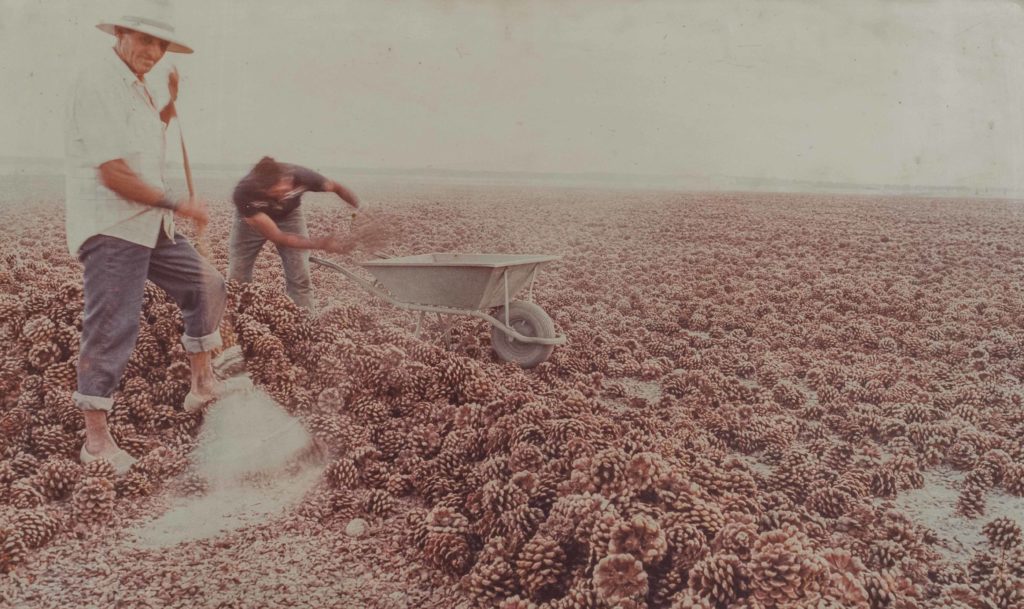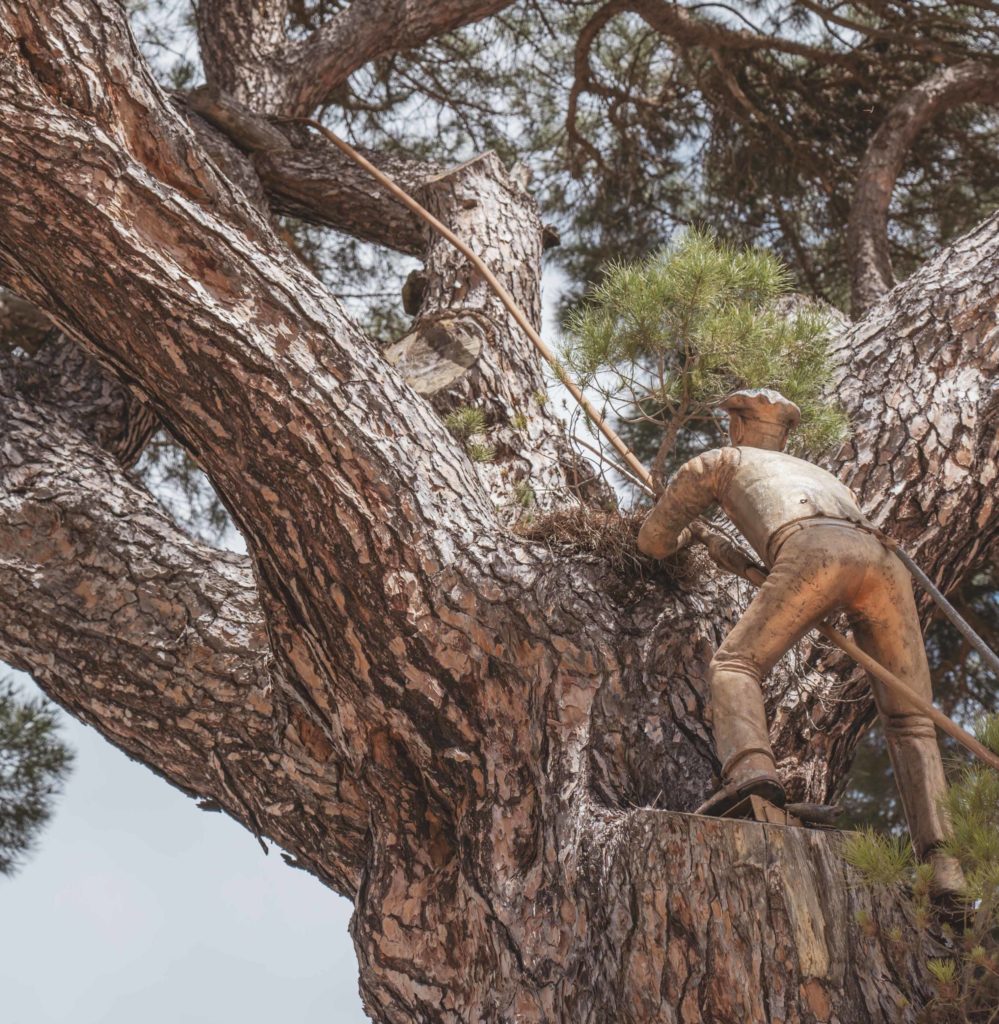
November represents for Piñones de Castilla the beginning of a vital phase: the collection of our little treasures, the pine nuts. In Pedrajas de San Esteban we have preserved in a very special and careful way the tradition of collecting the pinecone for generations, working our lands and seed to be recognised as the pine nuts town, not just in our area Castilla y León, but also in all Spain.
The collection process has evolved over the years, starting manually with the hard work of the pinecone workers or “piñeros”. We tell you our story.
In the Pinegrove land, Pedrajas de San Esteban, from November to April, the pinecone workers would gather in crews to start bringing down the pinecones. Within these crews, there are two types of pinecone workers:
1. The ones who climbed up the trunk and move throughout the branches of the pine trees with almost acrobatic movements, known as “human squirrels”.
2. The ones who wait in land ready to collect the pinecones when they fell to the ground.
The tradition tells that before their hard labour they gathered around bonfires and prayed to the town’s holy patron, “la Virgen de Sacedón”, in order to protect them on their risky work. All of them prepared themselves with the rudimentary work clothes, a beret, the long stick, called “vara”, used to hit the pinecones, and some also wore special boots with hooks underneath to facilitate the climbing.

The reason why the men adopted this particular name is because the skilfully movements that they showed through heights, looking like authentic “human squirrels”. The pinecone workers who climbed the pines could reach 14 or 15 meters in the highest branches.
As a curious fact, the pinecone workers could define the height of the pines in a specific way: 5 meters of stairs, 6 meters of the stick, 2 meters of a man and another 2 or 3 meters of climbing.
In 2002, Juan José Calvo Medina, who was born in Pedrajas de San Esteban, made a sculpture to pay respect to those pinecone workers, with the claim “To say pinecone worker is to say the history of a town”.
It is a metal figure located on the trunk of an old pine tree with which the author represent and agile man climbing up the tree until he firmly reaches the branch. If you look carefully, you can see details that invite you to remember the characteristics of the traditional pinecone workers, such as the use of the long stick to hit the pinecones and even the untied laces on the boots.
The piece tells a story, a way to earn a living taking advantage of what the land offers and keeps alive also the memory of a profession that is unknown to many.
Currently, in many cases the process is carried out using special machinery that makes the pine slightly vibrate so that it releases its treasured seed. However, there are still some brave workers who continue climbing the pines to collect the pinecone as always, especially in those areas where access for machines is very difficult. It should be noted that, the pines in the young Pinegrove lands are not high, so it is not necessary to climb, but rather, with the large stick the cones can be hit so that they fall to the ground, just as it was done formerly.

Although the profession of the pinecone worker has evolved and has in many ways become mechanized, history will continue as long as we keep our traditions in mind and take care of the Pinegrove lands for what they are: great treasures.


ADDED PRODUCT!